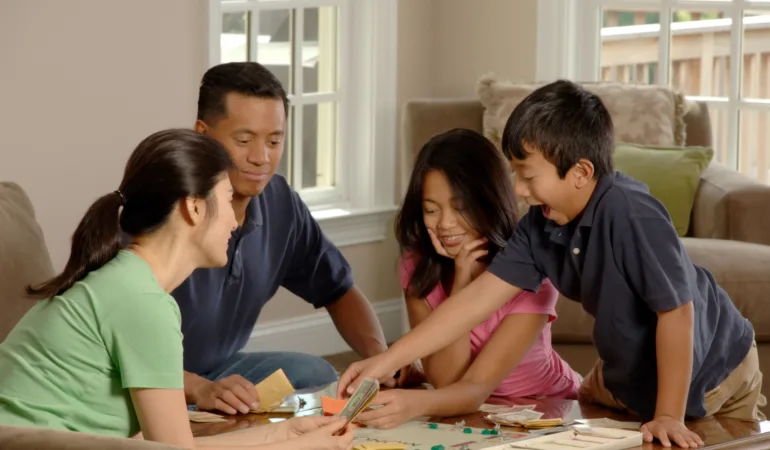Terrible Sleep Habits? How Executives Can Stop Destructive Late Nights and Actually Rest
You’re exhausted, but when bedtime rolls around, they just can’t let go. Instead of drifting off, you linger in the wee hours, scrolling through your phones or binge-watching shows that don’t even hold your interest. It’s not that you don’t know better—you do. You feel the pull to sleep, to recharge for the demanding day ahead.
You’re looking for a sliver of time that’s just yours, free from emails, meetings, or family obligations.
Poor sleep hygiene for executives often stems from that craving for autonomy. It’s like they’re carving out a secret space to breathe, to feel like themselves again—the version that’s not always adapting to everyone else’s needs or expectations.
Yet, the moment they start to enjoy time away from work, guilt creeps in. “I should be sleeping,” they think. “This is a waste of time.” And so begins the internal battle, leaving them stuck in a hazy middle ground where they get neither sleep nor real enjoyment.
High-Achievers Often Sleep Terribly
You push through long days, making decisions that affect teams or entire companies, all while juggling personal responsibilities. By evening, you’re wiped out, but that quiet time after everyone else has gone to bed feels like the only chance to unwind without interruption. Maybe you tell yourself it’s just a quick check of social media or one more episode, but hours slip away.
The problem isn’t the activities themselves; it’s that they’re not truly fulfilling. You’re not laughing with friends, pursuing a hobby that lights you up, or even just daydreaming freely. Instead, it’s this numb scrolling, half-hearted and laced with self-reproach. You end up feeling more drained, frustrated with yourself for “wasting” time, and then the cycle repeats the next night.
Sleep suffers, energy dips, and that sharp edge you need for your professional life starts to dull. Over time, this constant push-pull can leave you feeling fragmented, like parts of yourself are unraveling under the strain of always putting duty first:
Poor Sleep Hygiene is Costing You a Lot
| Symptom | Statistic | Reference |
|---|---|---|
| Diminished Focus and Decision-Making | After five consecutive nights of partial sleep deprivation, participants showed reduced data gathering before making decisions and increased risk propensity. | Effects of Total and Partial Sleep Deprivation on Reflection … – https://pmc.ncbi.nlm.nih.gov/articles/PMC7261660/ |
| Lowered Creativity and Innovation | Declines in sleep are associated with lower individual creativity and productivity, significantly impacting the elaboration process in innovation. | Workforce sleep and corporate innovation – ScienceDirect.com – https://www.sciencedirect.com/science/article/pii/S0048733325000204 |
| Increased Irritability and Mood Swings | Poorer sleep quality is directly associated with increased irritability (β = 0.25, p < .001). | Associations between sleep quality and irritability – PubMed Central – https://pmc.ncbi.nlm.nih.gov/articles/PMC10978035/ |
| Heightened Risk of Burnout | At least 79% of UK employees experience burnout, with around 35% reporting extreme or high levels due to factors including lack of breaks. | 64 workplace burnout statistics you need to know for 2024 – Spill – https://www.spill.chat/mental-health-statistics/workplace-burnout-statistics |
| Strained Relationships | Poor sleep leads to increased feelings of anger, which in turn negatively impacts perceptions of romantic partnerships. | New psychology study uncovers the romantic consequences of poor … – https://www.psypost.org/new-psychology-study-uncovers-the-romantic-consequences-of-poor-sleep-quality/ |
| Physical Health Decline | Insufficient sleep leads to increased incidences of cardiovascular morbidity and chances of diabetes mellitus, with about 1 in 3 US adults reporting not getting enough rest. | What Are Sleep Deprivation and Deficiency? |
| Reduced Productivity and Performance | Fatigue from poor sleep costs US companies around $136.4 billion annually in productivity losses. | The Link Between Sleep and Job Performance – Sleep Foundation – https://www.sleepfoundation.org/sleep-hygiene/good-sleep-and-job-performance |
| Elevated Anxiety and Depression | Participants averaging 6 hours or less of sleep per night are about 2.5 times more likely to have frequent mental distress, including anxiety and depression symptoms. | Effect of Inadequate Sleep on Frequent Mental Distress – CDC – https://www.cdc.gov/pcd/issues/2021/20_0573.htm |
| Hindered Career Progression | Nearly 25% of US adults suffer from insomnia, often experiencing excessive sleepiness that impacts work performance and career opportunities. | When Insomnia Threatens Your Career: Finding Balance Between … – https://wesper.co/blogs/wesper-journal/when-insomnia-threatens-your-career-finding-balance-between-sleep-and-work |
| Compromised Overall Well-Being | Lack of sleep is compromising the mental health of 78% of adults, contributing to reduced overall well-being. | Lack Of Sleep Is Compromising The Mental Health Of 78% Of Adults – https://neurowellnesstms.com/lack-of-sleep-is-compromising-the-mental-health-of-78-of-adults/ |
Poor Sleep Hygiene Is the Result of Unmet Needs
What if we flipped the script and saw this late-night resistance not as a flaw, but as a signal from your innermost self? Deep down, you’re craving freedom. You want a moment to simply exist without the constant adjustments to please or perform for others. It’s a chance for your creative, spontaneous side to emerge uninterrupted.
This is called your “creative self” and it’s as essential to your brain as food is to your body. This is the impulse you feel, especially after a demanding week, to indulge yourself, to play, to do something that’s not for anyone else but you. Sometimes it’s wanting to create, explore, connect, or simply enjoy.
The “creative self” passively repairs your mind
Accessing the Creative Self is the way we flush out the content of the day, daydream, and often, we passively find solutions to hard problems. It’s a mode that restores our energy, and is essential for high level creativity and problem solving. It’s what some people call “active rest”, and neglecting it has detrimental consequences for your body and mind.
Connecting with this aspect of yourself is like coming up for air in competitive swimming. That breath might feel like it costs you speed in the moment. But skip it too often, and your form starts to falter. Your strokes weaken. Eventually, you’re gasping and collapsing from lack of oxygen.
Or think of an F1 driver eyeing a pit stop. To a rookie, it seems like a frustrating delay that slows the race. But a seasoned pro knows refusing to change those worn tires will lead to blowouts, spins, or worse. It could derail the whole lap.
Similarly, a marathon runner can’t skip hydration breaks thinking they’ll save time. Dehydration leads to cramps and slowdowns. It could mean dropping out of the race altogether.
In the same way, you might not realize just how much denying yourself that exhale—to play, to reward yourself freely—is costing you. It clouds your focus at work. It strains your relationships. That unmet need to create and enjoy doesn’t vanish. It builds up, and if not listened to, can create larger problems down the road like angry blow ups, burnout, avoidance of important problems, relationship stress and chronic pain.
Honor Needs Openly for Balance
Imagine honoring that need openly, without the sneakiness or shame. Picture building it right into your week—like scheduling an evening walk where your mind can wander, or dedicating time to a creative pursuit that brings a genuine smile.
Treat it as non-negotiable, just like a key meeting or a workout. As Winnecott, a British psychologist, once observed, “It is in playing and only in playing that the individual child or adult is able to be creative and to use the whole personality, and it is only in being creative that the individual discovers the self.”
The Emotional Habit that’s Impacting Your Sleep
This pattern is a step-by-step emotional process where your drive to be always productive collides with a quieter, more authentic urge for down time, leading to an exhausting back-and-forth that gives you neither. This often traces back to early habits of always putting others first, shaping a pattern where your own needs feel secondary.
Here’s what’s unfolding inside:
- Constant Demands Build Up: Your day starts with a whirlwind of responsibilities—leading teams, solving problems, supporting family—where you’re always tuning yourself to fit what others need. It’s like wearing a mask of efficiency and reliability, but over time, this nonstop accommodation leaves little room for your own unfiltered thoughts or whims. By nightfall, you’re craving a break from this role, a space where you don’t have to adjust or perform.
- Personal Space Rebellion Emerges: As the house quiets down, that suppressed part of you stirs—a need for autonomy, for time that’s purely yours to let your mind drift or explore without agenda. It’s not laziness; it’s your creative self pushing back, seeking a moment of uninterrupted being where you can feel whole and alive, not fragmented by constant demands.
- Self-Doubt and Fragmentation Intrude: Just as you start to relax into it, the critical voice kicks in: “You should be productive or sleeping—this is selfish.” This clash creates an inner fracture, where guilt amplifies the tension, turning what could be restorative into something anxious and draining. You feel scattered, like pieces of yourself are pulling in opposite directions, leading to that numb, unproductive limbo.
- Grey Zone Stalemate Persists: Stuck in the middle, you default to safe but empty habits like doom-scrolling, which mimic freedom without delivering real joy or rest. The tug-of-war drags on, eroding your energy and leaving you frustrated, as neither side “wins”—you don’t get the sleep you need, nor the genuine recharge your inner self is begging for.
- Guilt wins: You finally tell yourself you’ve really messed up, and that you need to be better about getting to bed at a good time. You chastise yourself, and head off to bed dreading how tired you’ll be tomorrow, wishing you hadn’t been so selfish… only to start at #1 again in the morning.
Guilt Blocks Progress, Not Your Need for Down Time
The biggest hurdle to your sleep?
It’s NOT your need for down time.
This is where we need to get it right. Your need to relax and recoup, to access your creative self, is not the problem. The problem is that you’re not respecting your valid need for a break to yourself, and when you do, it’s crowded out by guilt.
That nagging guilt. It whispers that taking time for yourself is indulgent, that real leaders push through without “frivolous” breaks. Maybe it stems from early lessons about hard work equaling worth, or from seeing colleagues who seem to never slow down. Whatever the root, it keeps you locked in the tug-of-war, afraid that embracing your need to just be means dropping the ball elsewhere. But here’s the truth: ignoring that need doesn’t make it go away; it just manifests in ways that harm you more, like poor sleep, burnout, and that sense of inner unraveling.
Guilt is that root problem. If you didn’t have guilt, you might plan a reasonable time to enjoy yourself. Even a half hour doing something you truly enjoy *without guilt* is rewarding. But waffling back and forth all night leaves you both unsatisfied and more exhausted.
Guilty Self-Talk vs. Healthy Alternatives
| Guilty Phrase | Healthy Alternative |
|---|---|
| “I should be sleeping instead of this.” | “I deserve this moment to unwind and recharge.” |
| “This time is such a waste— I need to be more disciplined.” | “Taking time for myself now will make me sharper tomorrow.” |
| “Why do I always sabotage myself like this?” | “It’s okay to honor my need for autonomy.” |
| “Real professionals don’t need personal time; they just power through.” | “Play and rest are essential for my long-term success.” |
Depth Therapy Offers Support
Therapy offers a gentle path forward. In these conversations, you explore the origins of that inner conflict in a safe, supportive space—no judgments, just curiosity. It’s about uncovering why you’ve learned to prioritize accommodation over your own creative flow. It’s also about rediscovering the freedom to exist without constant interruption or self-reproach.
You’ll learn to quiet the critical voice and build a stronger sense of permission, allowing your true self to surface without the anxiety of fragmentation. Many find that as they delve deeper, sleep improves naturally, energy returns, and life feels less like a constant pull and more like a harmonious flow. Reaching out to a therapist could be the kindest step you take for yourself.
FAQ
What causes poor sleep hygiene for busy professionals?
For busy professionals who struggles to sleep at the end of the day, poor hygiene is often a conflict between daily demands and the need for personal autonomy, leading to guilt and unproductive habits that disrupt sleep.
How can professionals incorporate downtime without guilt?
Start by scheduling short, intentional breaks for enjoyable activities earlier in the evening, treating them as essential for overall well-being and performance.
When should someone consider psychotherapy for sleep issues?
Consider psychotherapy if guilt around self-care feels persistent and impacts sleep, work, or relationships, as it helps explore and resolve underlying conflicts.
What are quick ways to improve sleep hygiene?
Establish a consistent bedtime routine, limit screen time before bed, and create a calm sleep environment free from distractions.
How does poor sleep affect professional performance?
It can lead to reduced focus, decision-making errors, and increased stress, ultimately impacting productivity and relationships.







